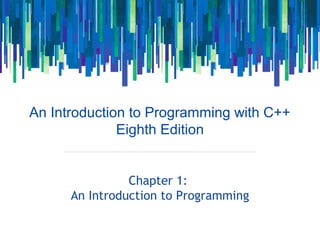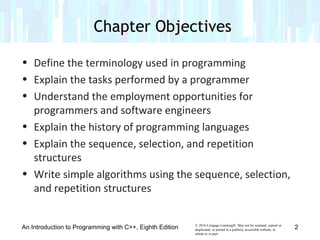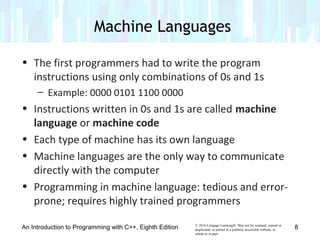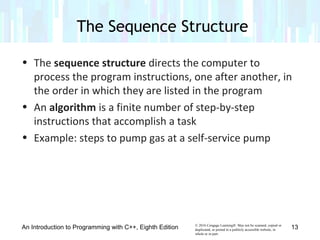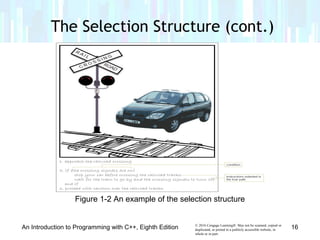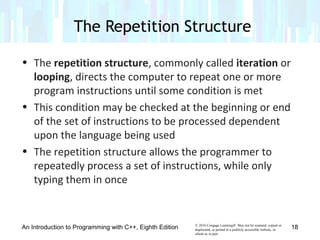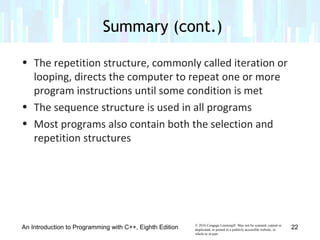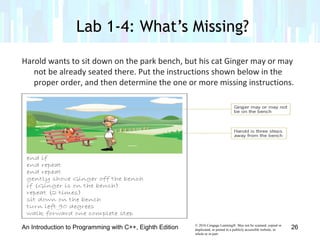The document is an introductory chapter about programming from a textbook on C++ programming. It defines key programming concepts and terms like programs, programmers, programming languages, algorithms, and control structures. It explains that programs are sets of instructions for computers, and that programmers use programming languages to communicate those instructions. Early programming languages included machine language using binary, and assembly language using mnemonics. Modern languages are high-level languages that are easier for humans to read and write. These can be procedural languages or object-oriented languages. The chapter describes the three basic control structures that all programs use - sequence, selection, and repetition. Sequence structures run code in order, selection structures make decisions using conditions, and repetition structures repeat code for
